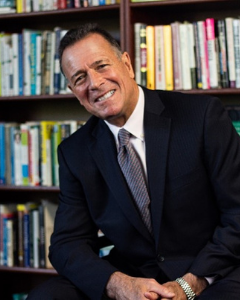
 By Tino Mantella
By Tino Mantella
TLG President & CEO
I love this famous quote from Wayne Gretzky:
“I skate to where the puck is going to be, not where it has been.”
According to a 2021 article in the Harvard Business Review, poor succession planning results in a loss of over $500 billion per year from US companies. This revelation is unsurprising because Turknett Leadership Group (TLG) has consulted with numerous companies ranging from the well-prepared to the nothing-will-happen-anytime-soon.
Companies are all about backing up their data, adding security threat protections, developing new products and services, and having enough reserves to get them through crises. Yet, when it comes to succession planning, organizations either do not think they need it, will not take time to do it, or only make a half-hearted effort. Intellectually they know that a key person moving on to the next company could be disastrous. They understand that people get sick, retire early, or quit because of issues with a boss, peer, or direct reports. There are many reasons why people move on, so why not treat the potential challenge at least as equally critical as a data breach or any other major business disruptor?
What to Consider for Succession Planning
So, how does one properly prepare for succession planning? There are three areas you will want to consider:
Job Competencies
The development of job competencies is a wonderful place to start. What competencies will the candidates require to be most effective in the role? We partner with clients during this process to create a comprehensive list of job competencies that will help guide the hiring process.
Assessing Your High-Potentials
Next, you will want to identify and assess the candidates who are most successful in their current roles and what those key ingredients are. To do this, interview those candidates using assessment tools to measure their essential characteristics. We recommend having a professionally certified coach interview them as well. What are the soft skills required to do the job effectively beyond technical skills or raw potential.
Another effective method for measuring a candidate’s readiness and leadership capabilities is through an Assessment Center. An Assessment Center is a tool for evaluating a candidate’s current skill and competencies using a simulation of activities that a candidate may encounter. This tool is an excellent way to see how prospective job candidates perform in real-time situations. TLG’s Assessment Center is highly customizable and built around the client’s needs.
Lastly, consider conducting a 360 assessment. This confidential tool is a terrific way for a client and their coach to identify perceptions from supervisors, peers, and direct reports. There will always be areas for the coach and their client to work on through coaching, training, and other means. Why not tackle those as a step in high-potential development?
Training & Development of High-Potentials
Provide resources for training and development that foster the competencies required before taking on the new role. Put the internal high-potential candidates through individual and/or group coaching programs if possible. A battery of assessments can also help candidates discover their leadership strengths and areas of improvement.
Final Thoughts
The above areas relate to identifying and grooming internal candidates for key positions. Generally, TLG recommends companies explore and evaluate outside candidates as well, but it depends on the internal culture and related expectations. Often search firms, even for top leadership positions, do not spend the time to utilize assessment tools. To find the ideal match, companies should leave no stone unturned. We all know that there is a major cost to replacing a bad hire.
We are happy to provide more personalized recommendations. Reach out. We are here to support you!
Tino
Contact Info:
Cell: 678-984-8528

